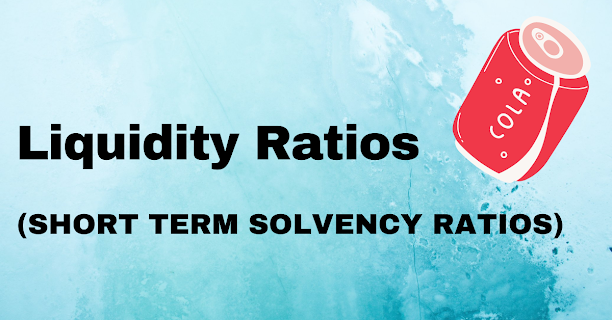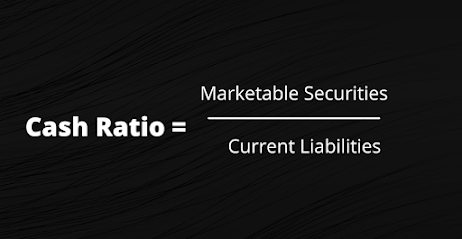Liquidity Ratio
What is Liquidity? In simple words, Liquidity is cash and cash equivalent. Here cash and cash equivalent denote marketable securities like shares which can be easily converted into cash. If somebody says there is a liquidity crisis in the bank it represents a shortage of cash in the bank. similarly, If somebody says there is excess liquidity in the bank it represents excess cash in the bank. The objectives of Liquidity Ratios are to measures the short-term solvency of a firm. Liquidity ratios focus on current assets and current liabilities.
Table Of Content
1) Current Ratio
2) Quick Ratio
Quick assets include cash and near-cash assets excluding inventories and prepaid expenses. Quick assets = current assets - Inventories - Prepaid Expenses. current liabilities include creditors, bank overdrafts, bills payable, outstanding expenses, and short-term loans. The quick ratio is also called as acid test ratio. The quick ratio of 1:1 is considered satisfactory.
3) Cash Ratio
The cash ratio measures the absolute liquidity of the business. cash ratio is also called super quick ratio or absolute liquidity ratio. Higher the ratio, the higher the liquidity.
4) Net Working Capital
It indicates the excess current assets over current liabilities. The greater the amount of networking capital, the greater the liquidity of the firm. similarly, Working capital is the money require to run the day-to-day administrative expenses of the business. If the company does not have sufficient working capital to run its business and pay off the short-term borrowings then the company may get insolvent.
5) Basic Defence Interval
If due to any reason all the company's revenue were to suddenly cease, the basic defense interval would help to determine the number of days the company can cover its cash expenses without the aid of additional financing. A higher ratio would be favorable as it would reflect the ability of a firm to meet cash requirements for a longer period. Unavoidable expenses mean interest, salaries, rent, and income tax. Example: unavoidable expenses per month = 10,00,000. then unavoidable expenses per day = 10,00,000/30 = 33,334. Quick assets = 12,00,000. then, Basic Defence Interval = 12,00,000/33,334 = 35.9 days. It means the company has sufficient funds to pay off for 35 days expenses.
Conclusion
Let me summarize the main point to be remembered from the above ratio. all the above ratios are equally important to know about the short-term solvency of the firm. If the current ratio is 1 then it means the firm has Rs 1 current assets to pay off the Rs 1 current liabilities. If the quick ratio is 1 then it means the firm has RS 1 Quick assets to pay the RS 1 current liabilities. similarly, if the firm Basic Defence Interval is 10 days then it means the firm can pay off its operating expenses which are unavoidable expenses of 10 days if the business is halted due to circumstances beyond control like COVID. Only one ratio cannot determine whether the company is good or bad. so, always look at various ratios before investing in any company.
Learn More By Doing Fundamental Analysis
I hope you enjoy reading this blog post.
Thank you.









Comments
Post a Comment